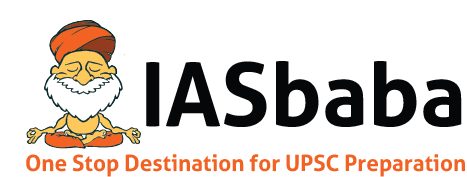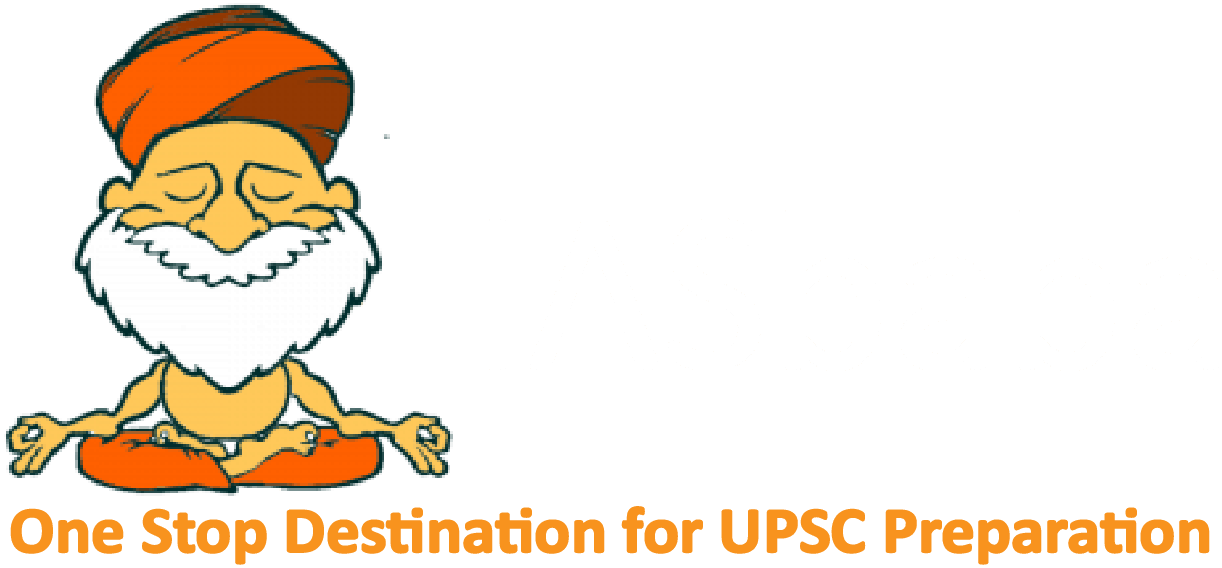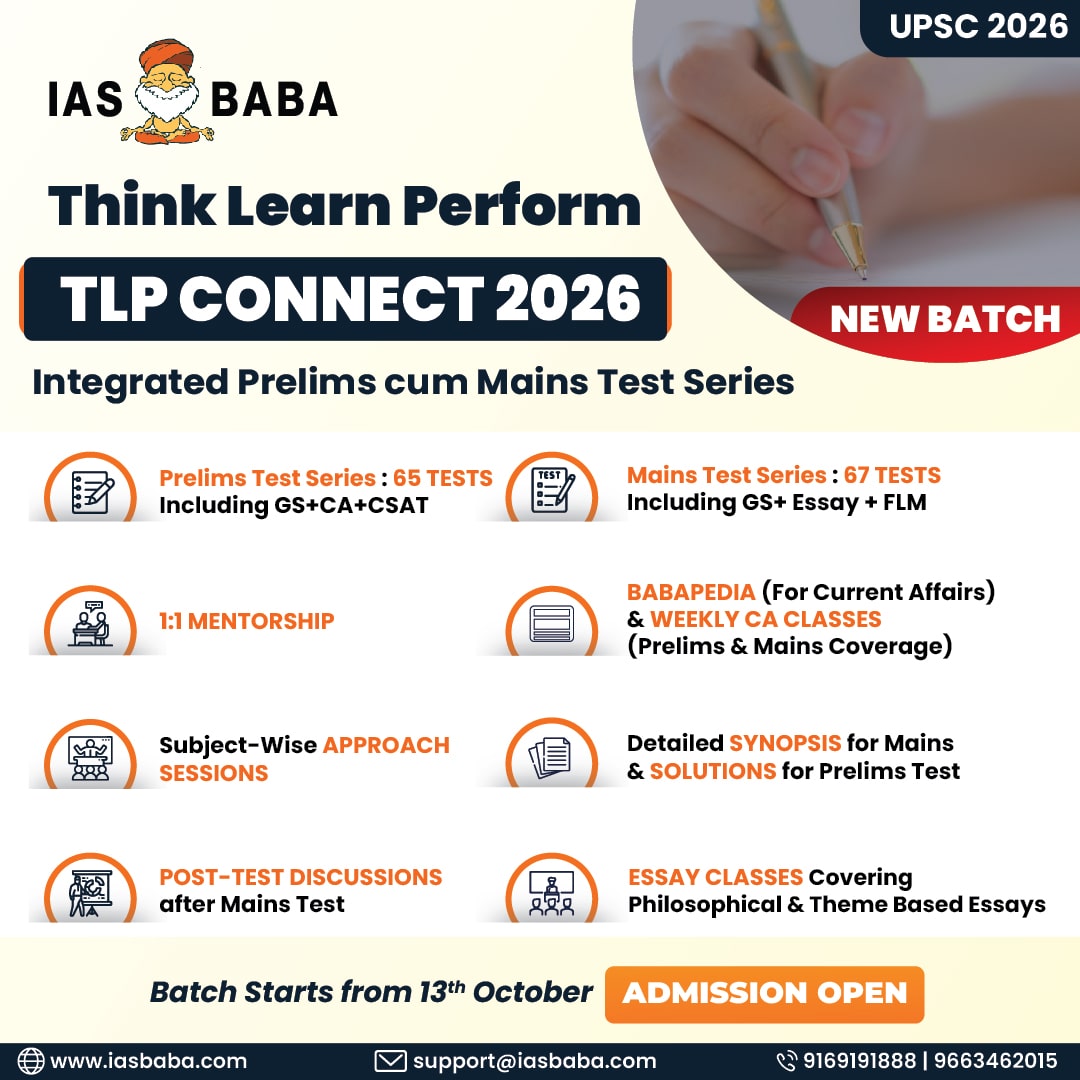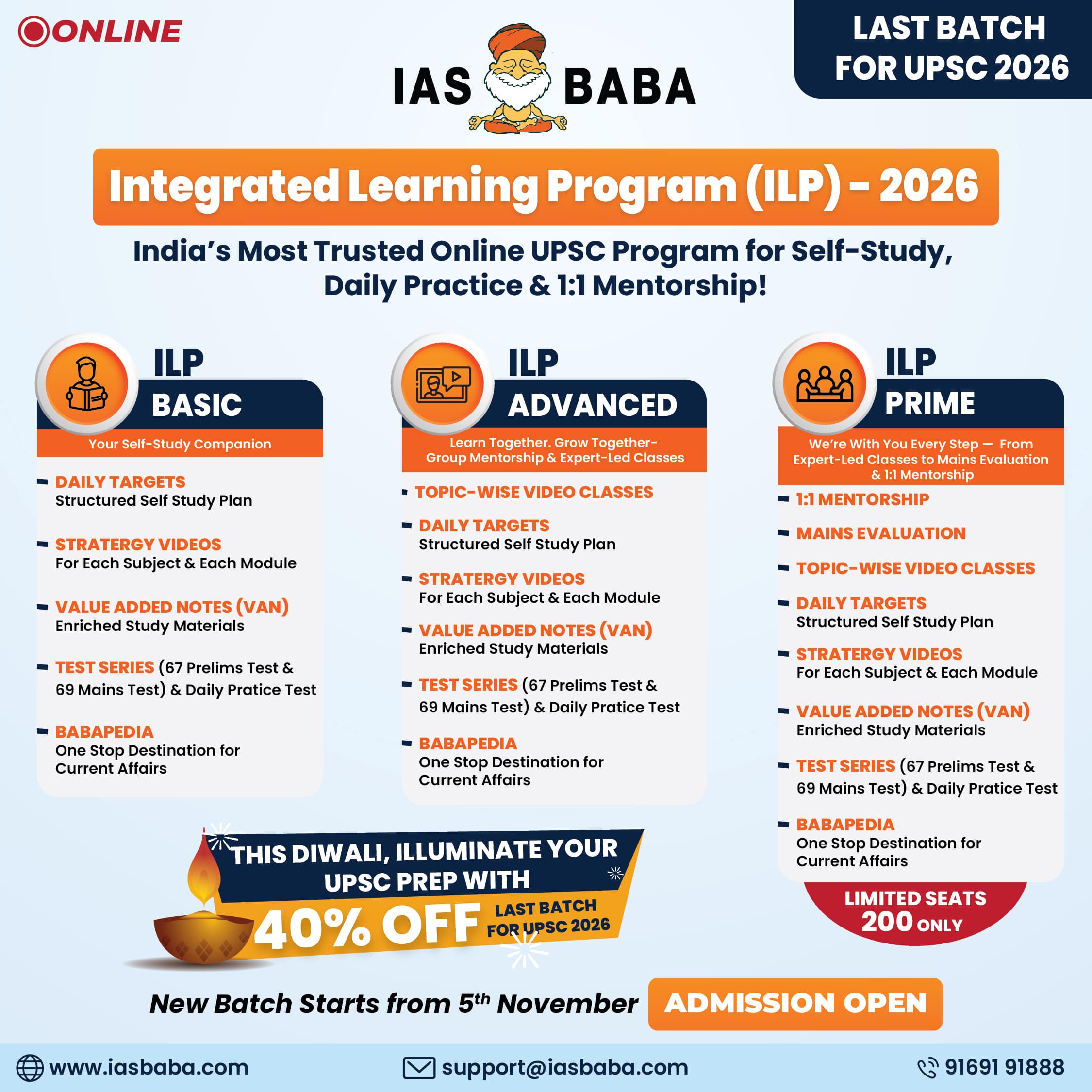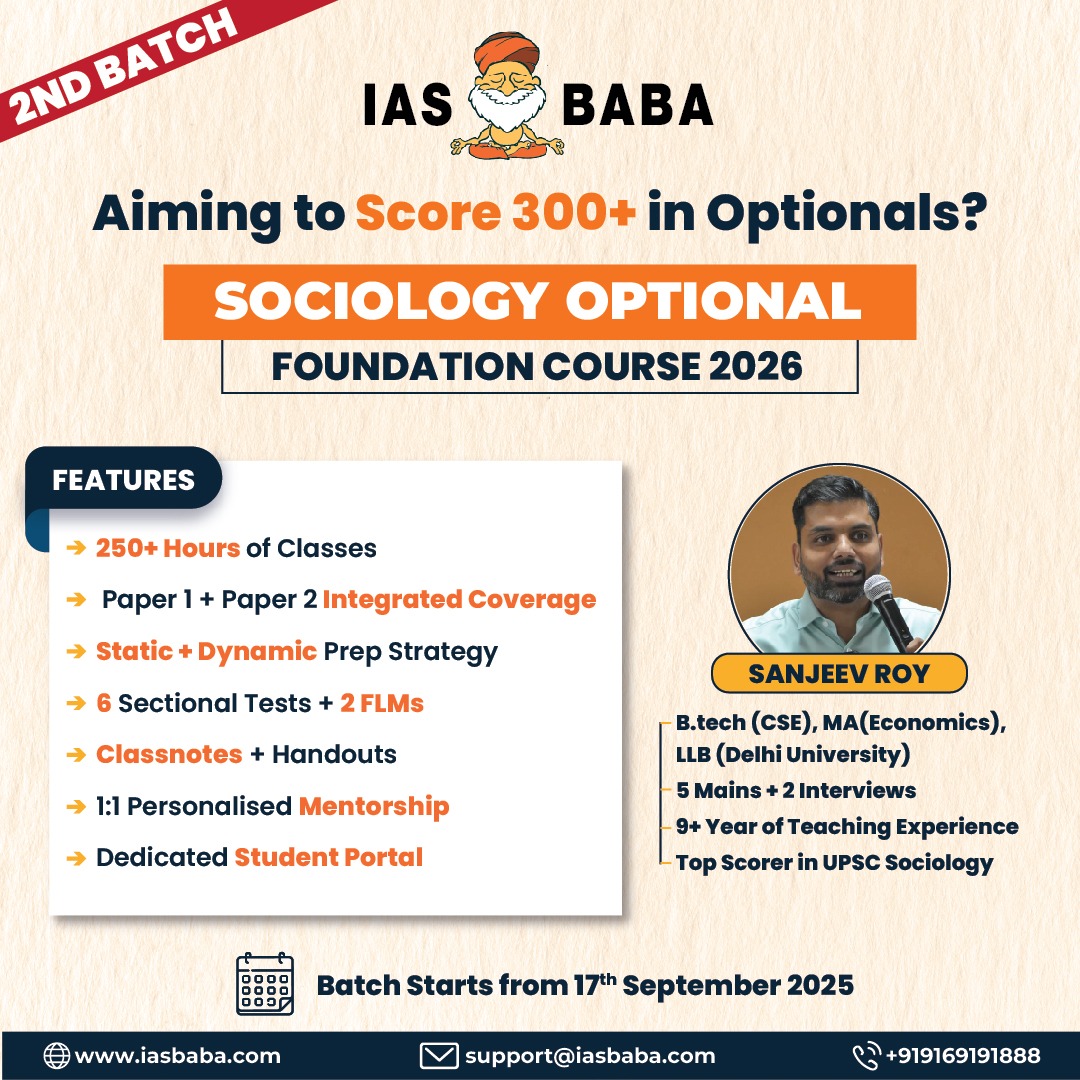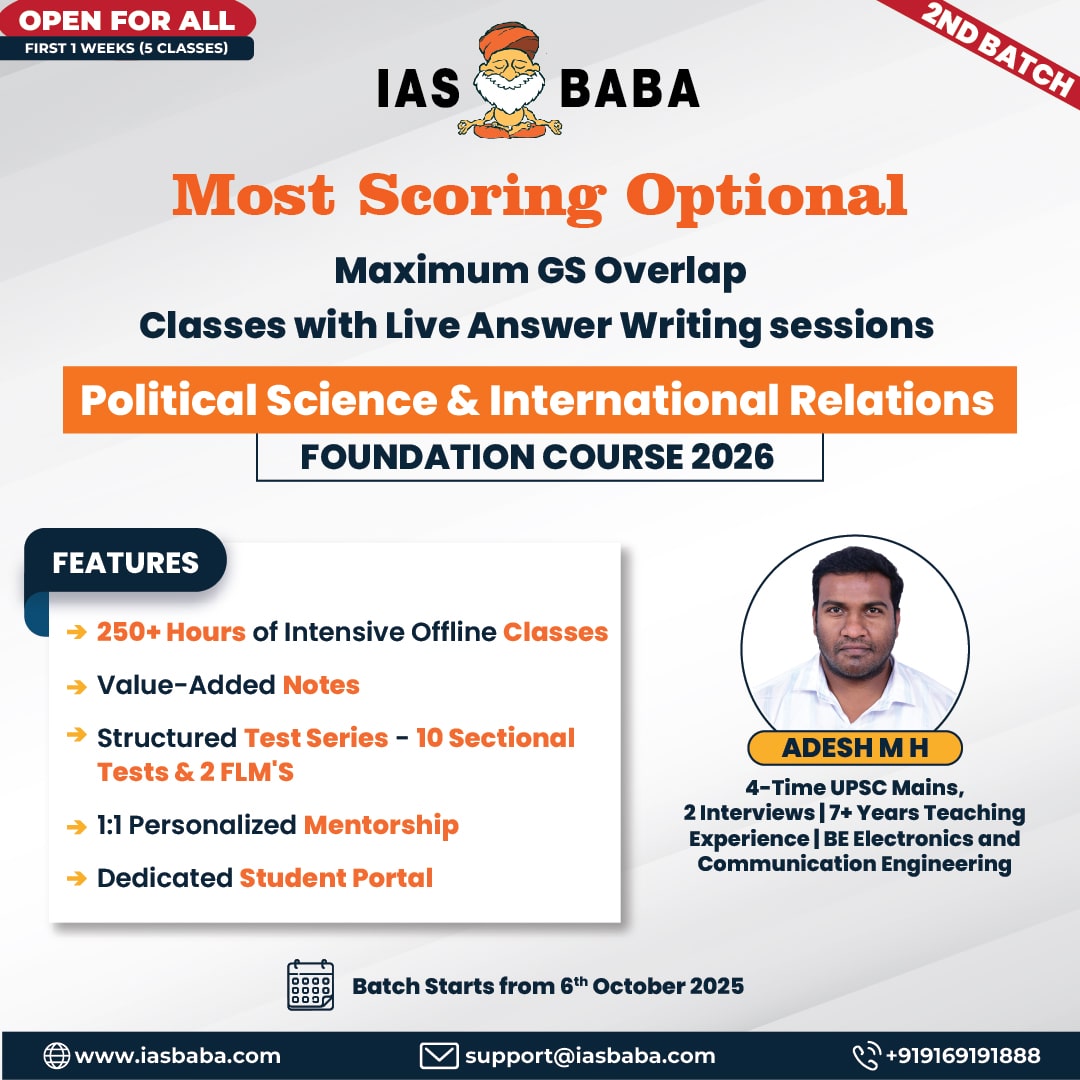IASbaba's Daily Current Affairs Analysis
rchives
(PRELIMS Focus)
Category: POLITY
Context: The Supreme Court of India has called for a revisit of the blanket exemption granted to minority institutions under the RTE Act, 2009, holding that such exemption could undermine education standards.
Key Bench Observations
- Expressed serious doubts on the 2014 Pramati Educational and Cultural Trust ruling that upheld full exemption.
- Warned that exemptions may be misused to evade child-centric regulations.
- Clarified there is no conflict between Article 21A (Right to Education) and Article 30(1) (Minority Rights); both can co-exist.
- Suggested that the 25% quota should also allow admission of children from outside the minority community for broader inclusiveness.
Broader Context
- Provisions like TET and reservation for disadvantaged groups should ideally apply to all institutions, including minority ones, to maintain inclusiveness and quality.
- Section 12(1)(c) of the RTE Act (admission of disadvantaged groups) does not dilute minority character and should be applied.
- Court stressed that the 2014 ruling needs reconsideration to uphold the universalization of elementary education and protect child welfare standards.
Learning Corner:
Right of Children to Free and Compulsory Education (RTE) Act, 2009
- Enactment: Came into force on 1st April 2010, operationalizing Article 21A of the Constitution (Right to Education as a Fundamental Right).
- Objective: To provide free and compulsory education to all children in the age group 6–14 years.
- Key Provisions:
- No child shall be denied admission for lack of documents or late admission.
- Prohibits physical punishment, mental harassment, screening tests, capitation fees, and private tuition by teachers.
- Mandates minimum infrastructure standards (student-teacher ratio, classroom, drinking water, toilets, etc.).
- Teacher Qualifications: Only trained and qualified teachers allowed; Teacher Eligibility Test (TET) mandated.
- 25% Reservation (Section 12(1)(c)): Private unaided schools must reserve 25% seats for disadvantaged and weaker section children.
- Emphasizes continuous and comprehensive evaluation—no detention till completion of elementary education.
- Coverage: Applies to government, local authority, and private unaided schools (except minority institutions, as per earlier court rulings—now under reconsideration).
Source: THE INDIAN EXPRESS
Category: INTERNATIONAL
Context : The Shanghai Cooperation Organisation (SCO) leaders, through the Tianjin Declaration, unanimously condemned terrorism, referencing attacks in Pahalgam
Key Points from the Declaration
- Opposed unilateral sanctions and supported fairness in global governance.
- Condemned targeting civilians in conflicts, mentioning Gaza and Afghanistan.
- Supported political stability in Afghanistan and endorsed China’s Belt and Road Initiative.
Summit Highlights
- PM Modi and President Putin discussed peace, stability, and cooperation, including Ukraine.
- Xi Jinping stressed fairness in global leadership and warned against Cold War mentality.
- Laos was upgraded to SCO partner status; members backed humanitarian aid and economic development.
Learning Corner:
Shanghai Cooperation Organisation (SCO)
- Formation: Established in 2001 in Shanghai by China, Russia, Kazakhstan, Kyrgyzstan, Tajikistan, and Uzbekistan (building on the earlier “Shanghai Five” group).
- Membership: Currently 9 members – China, Russia, India, Pakistan, Kazakhstan, Kyrgyzstan, Tajikistan, Uzbekistan, and Iran (joined in 2023). Several observer states and dialogue partners also participate.
- Headquarters: Beijing, China.
- Official Languages: Chinese and Russian.
Objectives
- Promote regional peace, security, and stability.
- Combat terrorism, separatism, and extremism (the “three evils”).
- Enhance economic, cultural, and connectivity cooperation.
- Encourage multipolarity and fairness in global governance.
Key Features
- Regional Anti-Terrorist Structure (RATS): Based in Tashkent, focuses on intelligence-sharing and counter-terrorism.
- Annual Summits & Declarations: Used to align on political, security, and economic issues.
- Belt and Road Initiative (BRI): Endorsed by SCO, though India remains opposed.
- Expanding outreach with observer states, dialogue partners, and partner status (e.g., Belarus in process of joining, Laos as partner).
Source: THE HINDU
Category: SCIENCE AND TECHNOLOGY
Context: CEREBO is an indigenously developed, portable, non-invasive diagnostic tool for traumatic brain injuries (TBI).
It can detect intracranial bleeding and edema within a minute, is radiation-free, safe for infants and pregnant women, and can be used even by paramedics or unskilled personnel where CT/MRI scans are unavailable.
Importance & Usage
- Provides colour-coded, cost-effective, quick results for TBI detection.
- Useful in ambulances, trauma centres, rural clinics, and disaster zones.
- Improves outcomes through early diagnosis and triage without specialized infrastructure.
- Clinical trials have shown accuracy and integration into emergency pathways, with potential for global adoption.
Context: Traumatic Brain Injuries
- TBIs are a major health burden in India, with 1.5–2 million cases annually, largely from road accidents.
- Many remain undiagnosed due to mild or hidden symptoms, leading to long-term impairments.
- CEREBO helps bridge gaps in rural and emergency TBI care, offering rapid, objective assessment.
Source: THE HINDU
Category: GEOGRAPHY
Context: Geographers at the University of California Santa Barbara have uncovered why some rivers split into multiple channels (multi-threaded) while others remain single-threaded
Physical Mechanism
- Single-thread rivers maintain equilibrium between bank erosion and bar accretion—what erodes from one bank matches what is deposited on the opposite side, keeping the river stable.
- Multi-threaded rivers erode banks more quickly than they deposit material, resulting in channel widening and eventual splitting due to this persistent imbalance.
Broader Implications
- The distinction between river types affects flood risks, erosion hazards, and ecosystem services; understanding these patterns is increasingly important as extreme weather events become more common.
- Research showed many rivers historically shifted from multi-threaded to single-channel forms after human intervention, such as damming and sand mining, underscoring the impact people have on river morphology.
Technical Approach
- Scientists mapped river bank positions and water flows using thousands of satellite images, measuring erosion and gravel/sediment deposition to reveal cycles of instability behind channel splitting.
- This work highlights that river channel form is shaped not by static equilibrium but by repeated instability, informing future river management and flood prediction models.
Learning Corner:
Meandering
- Definition: Meanders are the sinuous, snake-like bends in a river channel that develop in its middle and lower courses due to lateral erosion and deposition.
- Formation Process:
- On the outer bank, fast-flowing water causes erosion (river cliff).
- On the inner bank, slower water leads to deposition (point bar).
- This continuous process accentuates the bends.
- Characteristics:
- Develops in rivers with gentle gradient, large volume of water, and fine sediments.
- Migration of meanders over time may lead to the formation of oxbow lakes when a bend gets cut off.
- Significance:
- Influences floodplain development.
- Plays a role in shaping alluvial landscapes.
- Important for ecosystems and agriculture due to fertile deposits.
Difference between Multi-threaded Rivers and Meandering Rivers
| Feature | Multi-threaded Rivers | Meandering Rivers |
|---|---|---|
| Definition | A river that splits into two or more interconnected channels separated by bars or islands. | A river with a single channel that develops sinuous, snake-like bends. |
| Cause/Mechanism | Caused when bank erosion > deposition → channels widen and split into multiple threads. | Caused by lateral erosion and deposition balance → bends form due to helicoidal flow. |
| Appearance | Network-like, with several active water channels (braided/multi-thread pattern). | Winding or serpentine single channel with distinct loops. |
| Sediment Load | Usually associated with high sediment load (gravel, sand) and variable water flow. | Occurs in rivers with fine sediments (silt, clay) and steady flow. |
| Gradient | Typically, steeper gradients, unstable beds. | Typically, gentle gradients, low slope areas. |
| Examples | Brahmaputra in Assam (braided, multi-threaded). | Ganga in Bihar–UP plains, Mississippi River (USA). |
| Landforms Produced | Mid-channel bars, islands, multiple shifting channels. | Point bars, river cliffs, oxbow lakes, floodplains. |
Source: THE HINDU
Category: GEOGRAPHY
Context: A powerful 6.0-magnitude earthquake struck a remote mountainous region in Afghanistan, killing over 800 people and injuring at least 2,800. The quake flattened homes while families slept, particularly in eastern Kunar and nearby provinces.
Rescue Efforts & Impact
- Massive rescue operations are underway, with helicopters and volunteers evacuating victims despite blocked roads.
- Many villages were devastated, leaving families homeless and in urgent need of shelter.
- The epicentre was near Jalalabad, close to the Pakistan border, with tremors felt as far as Islamabad.
Learning Corner:
Earthquake
An earthquake is the sudden release of energy in the Earth’s lithosphere that generates seismic waves, leading to ground shaking and surface displacement.
Causes:
- Tectonic activity – movement along faults, plate collisions, subduction, or rifting.
- Volcanic activity – magma movement causing ground fracturing.
- Collapse earthquakes – due to subsurface cave-ins.
- Artificial/induced – reservoir filling, mining, nuclear tests.
Key Concepts:
- Focus (Hypocenter): Point within Earth where energy is released.
- Epicenter: Point on the Earth’s surface directly above the focus.
- Seismic Waves:
- P-waves (Primary): Fastest, compressional.
- S-waves (Secondary): Slower, shear.
- Surface waves: Cause most destruction.
Measurement:
- Magnitude: Measured by Richter Scale or Moment Magnitude Scale (Mw).
- Intensity: Measured by Modified Mercalli Scale (effects felt).
Geographical Distribution:
- Concentrated along plate boundaries – Pacific Ring of Fire, Himalayan belt, Mid-Atlantic Ridge.
Impacts:
- Landform changes (faults, uplift, subsidence).
- Secondary hazards – landslides, tsunamis, soil liquefaction.
- Human loss, infrastructure damage, economic disruption.
Source: THE HINDU
(MAINS Focus)
Introduction (Context)
Urban noise pollution has emerged as one of the most neglected public health and ecological challenges in India.
Despite legal frameworks like the Noise Pollution (Regulation and Control) Rules, 2000 and monitoring systems, decibel levels in Indian cities remain consistently above permissible limits, especially near sensitive institutions, eroding the constitutional promise of peace and dignity.
What is noise pollution?
Noise pollution refers to unwanted or excessive sound that can have harmful effects on human health, wildlife, and environmental quality.
Sources:
- Traffic: Road traffic, railways, and air traffic are significant contributors to noise pollution in urban areas. The constant honking, engine noise, and tire friction create a chaotic sound environment.
- Industrial Activities: Factories and construction sites generate high levels of noise from machinery, drilling, and other operations, affecting workers and nearby residents.
- Social and Recreational Activities: Loud music, events, and recreational activities can also contribute to noise pollution, particularly in residential areas.
Impacts of Urban Noise Pollution
- Causes stress, sleep disturbance, hypertension, cardiovascular diseases, impaired cognitive performance, and mental health issues.
- Reduces productivity, disturbs peace in residential areas, and affects learning environments in schools and recovery in hospitals.
- Creates civic fatigue; constant honking and drilling normalise “sonic aggression,” eroding dignity and mental well-being.
- Alters animal behaviour, migration, and communication.
- 2025 University of Auckland Study found that urban noise and artificial light disrupted the sleep and song patterns of common mynas after just one night. The birds sang less and with reduced complexity, impairing their social signalling. This indicates a broader breakdown of ecological communication systems.
Laws related to noise pollution
Constitution provisions
- Article 21 guarantees the right to life with dignity, encompassing mental and environmental well-being.
- Article 48A mandates proactive environmental protection.
Judgement
- In 2024, the Supreme Court of India reaffirmed that environmental disruptions — including excessive noise — can infringe upon the fundamental right to life and dignity under Article 21. In Noise Pollution (V), In Re, the Court recognised that unchecked urban noise poses a serious threat to mental well-being and civic freedom.
Laws
- The Noise Pollution (Regulation and Control) Rules, 2000 empower authorities to regulate and control noise levels in different zones (industrial, commercial, residential, and silence zones).
- They prescribe permissible decibel limits, restrict loudspeaker use, and provide for creation of “silence zones” around sensitive areas like hospitals, schools, and courts.
World Health Organisation
- According to the World Health Organization, safe limits in silent zones are 50 dB(A) by day and 40 dB(A) by night.
- Yet, in cities such as Delhi and Bengaluru, readings near sensitive institutions often reach 65 dB(A)-70 dB(A).
Issues in implementation of schemes (examples)
- Failure of National Ambient Noise Monitoring Network
- In 2011, the Central Pollution Control Board (CPCB) launched the National Ambient Noise Monitoring Network (NANMN), which was envisioned as a real-time data platform.
- A major technical issue has been the flawed placement of sensors, many of which are installed 25–30 feet above ground level, in violation of CPCB’s 2015 guidelines, thereby producing distorted readings that fail to capture ground-level reality
- India faces regulatory fragmentation, poor transparency, and institutional silence, with States like Uttar Pradesh failing to release updated noise data even in 2025.
- Civil fatigue
- Noise normalised as part of urban living (honking, drilling, loudspeakers).
- Unlike smog or garbage, noise leaves no visible trace hence lack of outrage against the issue.
- Failure of implementation of Noise Pollution Rules, 2000
-
- The Noise Pollution Rules, 2000 are rarely updated to reflect urban realities.
- There is little coordination between municipal bodies, traffic police and pollution control boards.
Way Forward
- A National Acoustic Policy should be formulated on the lines of the National Ambient Air Quality Standards, setting clear benchmarks for permissible noise levels across zones. Such a policy can provide uniformity, define accountability, and integrate health and ecological considerations into planning.
- The Noise Pollution (Regulation and Control) Rules, 2000 need urgent revision to reflect present urban realities such as rapid infrastructure expansion, 24×7 construction, and mixed-use zoning. Updated rules must introduce stricter limits, dynamic monitoring, and new categories of “high-risk areas.”
- The National Ambient Noise Monitoring Network (NANMN) should be decentralised. Local bodies and urban municipalities must be given access to real-time data with both responsibility and authority to act. This will ensure quicker response and reduce bureaucratic delays.
- Data collection must be directly linked to penalties, zoning compliance, and restrictions on construction and traffic violations. Without deterrence, rules remain ineffective.
- Night-time construction and logistics-related activities such as drilling, crane operations, and heavy vehicular movement must be strictly regulated, with exceptions allowed only for essential services.
- Effective enforcement requires inter-agency coordination. State Pollution Control Boards (SPCBs), municipal corporations, and traffic police should operate through a shared platform to avoid duplication, inefficiency, and institutional silence.
- The Smart Cities Mission must incorporate acoustic resilience as a design parameter. Urban planning should not only focus on mobility and expansion but also on creating healthier and quieter spaces.
- Quiet zones must be established and actively enforced around sensitive areas such as schools, hospitals, and courts.
- Structural interventions like green buffers, tree belts, and noise barriers along highways, metro lines, and airports should be prioritised to mitigate constant noise exposure in dense traffic zones.
- Educational interventions can play a critical role. Noise awareness should be included in school curricula, and driver training institutes should make it a core component of traffic education.
Conclusion
Noise pollution is no longer just an environmental issue but a constitutional, ecological and cultural challenge. Unless India adopts a rights-based, holistic approach, its smart cities may remain unliveable in terms of soundscape. Silence must not be imposed it must be enabled through governance, design and collective civic responsibility.
Mains Practice Question
Q “Noise pollution in urban India is not just an environmental issue but a constitutional, ecological and public health concern. Critically analyse and suggest reforms for sustainable noise governance.”. (250 words, 15 marks)
Source: Noise pollution is rising but policy is falling silent – The Hindu
Introduction (Context)
Universal Health Care (UHC), as defined by the Bhore Committee (1946), aims to provide quality health care to all irrespective of ability to pay.
Despite decades of planning, India lags behind global peers in achieving UHC.
Recent years have witnessed a surge in State-sponsored health insurance schemes like PMJAY (Ayushman Bharat, 2018) and State Health Insurance Programmes (SHIPs), creating an impression that UHC can be achieved through insurance expansion.
However, evidence shows that while insurance provides some relief, it also carries structural risks that may deepen inequalities and undermine the public health system.
Growth of Health Insurance in India
- Pradhan Mantri Jan Arogya Yojana (PMJAY) was launched in 2018 under Ayushman Bharat as the flagship national health insurance scheme.
- Most states run their own State Health Insurance Programmes (SHIPs), generally offering coverage of ₹5 lakh per household per year, similar to PMJAY.
- Coverage is restricted to in-patient hospitalisation, with treatment available in empanelled public and private hospitals (roughly 50:50 distribution).
- In 2023–24, PMJAY covered about 58.8 crore individuals with an annual budget of ₹12,000 crore (including 40% state contribution).
- SHIPs, covering a similar population, together had a budget of at least ₹16,000 crore.
- Combined expenditure of ₹28,000 crore remains a small share of public health spending, but is expanding rapidly.
- In states like Gujarat, Kerala, and Maharashtra, SHIP budgets grew at a rate of 8%–25% annually (real terms) between 2018–19 and 2023–24.
Risks and Challenges of Insurance-led UHC
While PMJAY and State Health Insurance Programmes (SHIPs) do provide some relief to vulnerable sections especially when public hospitals are overcrowded or lack adequate facilities.
However, these schemes cannot be considered a genuine alternative to a robust Universal Health Care (UHC) system.
Some of the flaws are:
- Promotion of profit-driven medicine:
- Nearly two-thirds of PMJAY funds flow to private hospitals, most of which are profit-oriented (similar data for SHIPs is limited).
- A study across six states revealed that PMJAY did not significantly raise hospitalisation rates, but it did increase the use of private hospitals.
- The dominance of poorly regulated private providers means that profit motives overshadow patient welfare, further entrenching inequalities rather than correcting them.
- Bias towards hospitalisation over primary care:
- Insurance schemes primarily finance hospital-based treatments, while primary and outpatient care, which are more cost-effective and widely needed, remain neglected.
- Strengthening primary health centres and outpatient services would reduce the burden of unnecessary hospital visits and associated costs.
- The inclusion of citizens aged 70 and above under PMJAY, combined with India’s rapidly ageing population, risks diverting a large share of public spending towards expensive tertiary care, leaving basic health services underfunded and inadequate.
- Utilisation Challenges
- Although official estimates suggest that PMJAY and SHIPs together cover nearly 80% of the population, the actual usage of these schemes is far lower.
- A large section of the enrolled population is unaware of their entitlements or finds the procedures too complex to navigate.
- According to the 2022–23 Household Consumption Expenditure Survey, only 35% of insured hospital patients could successfully use their insurance benefits.
- Hence insurance programmes have not led to a significant reduction in out-of-pocket health expenditure (OOPE), which continues to remain high in India.
- Discrimination Between Insured and Uninsured Patients
- Private hospitals often prefer treating uninsured patients, as they can charge higher commercial rates compared to the relatively lower reimbursement rates under insurance schemes. This discourages patients from availing their entitled benefits.
- Public hospitals, in contrast, sometimes show preference towards insured patients, since reimbursements from schemes bring them additional revenue.
- This situation has created a form of discriminatory treatment within the health-care system.
- Patients may face pressure to enrol for insurance at the time of admission in order to be treated, which defeats the principle of equity in health care.
- Concerns of Health-care Providers
- Health-care providers themselves have expressed dissatisfaction with these schemes.
- Low reimbursement rates are often cited, though this argument may not always be objective.
- Delays in settlement of claims, however, are a major and valid concern.
- The National Health Authority (NHA) reported that pending dues under PMJAY stood at ₹12,161 crore, which is higher than the scheme’s annual budget itself.
- Due to these payment issues, many private hospitals have temporarily suspended services for PMJAY beneficiaries, while others have completely withdrawn from the programme.
- As per a Health Ministry statement in the Lok Sabha, a total of 609 hospitals has opted out of PMJAY since its inception.
- Corruption
-
- The National Health Authority (NHA) has recently flagged over 3,200 hospitals for engaging in fraudulent practices under PMJAY.
- Reports from across the country highlight widespread irregularities such as denial of treatment to eligible beneficiaries, overcharging of insured patients, and unnecessary medical procedures carried out to exploit the system.
- Such practices undermine the very purpose of health insurance by exposing vulnerable patients to both financial hardship and health risks.
- Although mechanisms such as monitoring frameworks and periodic audits are intended to curb these malpractices, evidence suggests that they are largely ineffective.
- For instance, audit reports are rarely available in the public domain, reflecting a deeper issue of limited transparency and weak accountability in the administration of health insurance schemes.
Global Lessons
- Canada and Thailand use social health insurance as part of UHC.
- But PMJAY and SHIPs lack important features of social health insurance, such as universal coverage and focus on non-profit health-care providers.
Way forward
- India must gradually enhance its public health spending to 2.5% of GDP by 2025, as envisaged in the National Health Policy (2017).
- Higher allocations should be directed towards strengthening government hospitals, primary health centres (PHCs), and sub-centres, especially in underserved rural and tribal areas.
- The Health and Wellness Centres (HWCs) under Ayushman Bharat should be scaled up with adequate human resources, medicines, diagnostics, and telemedicine facilities.
- Emphasis on preventive and promotive healthcare (nutrition, sanitation, lifestyle changes, vaccination, early screening) can reduce disease burden significantly.
- A robust regulatory framework must be established to oversee private hospitals, with strict guidelines on pricing, billing transparency, and ethical medical practices.
- Independent grievance redressal bodies at central and state levels should handle patient complaints effectively.
- Awareness campaigns at the grassroots level are essential to ensure people understand their entitlements under PMJAY and state schemes.
- Simplified digital claim systems and multilingual helplines can reduce procedural hurdles.
- Community health workers (ASHAs, ANMs) can act as facilitators, guiding patients on scheme utilisation and helping bridge information gaps, especially in rural and marginalised communities.
- Regular social audits, parliamentary reviews, and performance evaluations should be institutionalised.
- Use of data analytics and AI tools can help detect fraud, monitor utilisation patterns, and ensure accountability in fund usage.
- Insurance schemes like PMJAY and SHIPs should act as supplementary tools, not as the primary backbone of UHC.
- The core focus must remain on public sector strengthening, universal primary care, and non-profit health delivery models.
Conclusion
India’s health insurance expansion (PMJAY, SHIPs) has been a major policy experiment, offering short-term relief to millions. However, it cannot substitute for robust public health infrastructure, adequate funding, and regulation of private players.
Unless India addresses its chronic under-investment (1.3% GDP) and strengthens primary, preventive, and public healthcare, UHC will remain elusive.
Insurance can complement reforms, but the foundation of UHC must rest on strong, equitable, and accountable public health services.
Mains Practice Question
Q Critically examine the strengths and limitations of health insurance–based models in India and suggest alternative pathways to achieve UHC. (250 words, 15 marks)
Source: The rise and risks of health insurance in India – The Hindu
